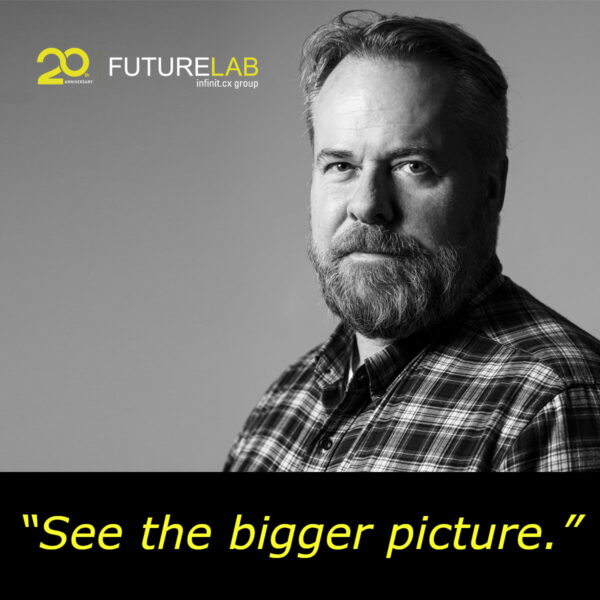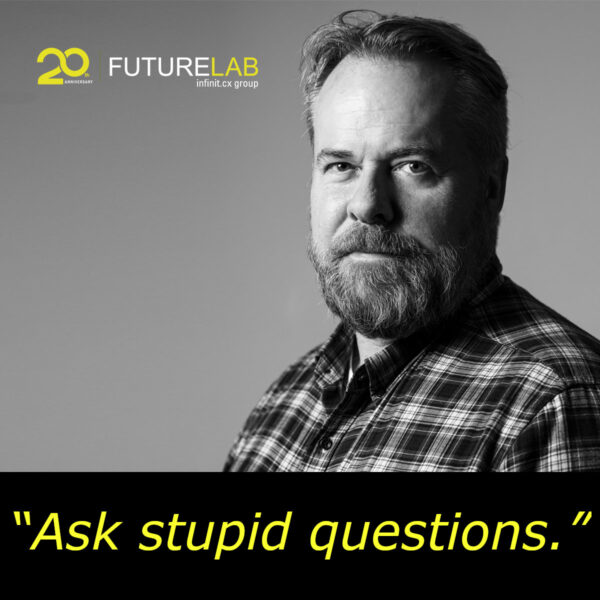TRANSCRIPT:
We’re here today to talk about “Enterprise 2.0” by Andrew McAfee. He is with MIT, used to be at Harvard Business School. Just switched over a couple of months ago. He writes an excellent blog on IT and business, that I’d recommend you read if you haven’t come across it yet. And so, he’s just produced his first book. To explain the title, Enterprise 2.0 is a term he coined to refer to using web 2.0 tools like Flickr, Facebook, YouTube, Twitter and similar tools in a business context.
The book is a lot like a recent book, “Groundswell,” that explained to general business people how social tools affected customers and markets and how to use those to communicate and listen. Communicating from inside the business to outside. “Enterprise 2.0″ performs a similar task, focusing on using those tools inside the business, more for collaboration and tapping the collective intelligence of employees. And so it takes this marginal topic and moves it to a general management-type discussion. Which I think is really important, to get it out of the IT discussion into the management discussion.
So as part of that objective he does a really good job of explaining how these tools work and also what ties them together because if you think about tools like Flickr or YouTube or a blogging platform or a messaging platform or a wiki there are a lot of differences among those but he’s tied together the common threads, using an acronym called SLATES (search, links, authoring, tags, extensions and signals). Signals, for example, like RSS that allows people who follow these platforms without having to log on to them every single hour to see what’s changed.
Another important part of the book is in putting the different tools into a context in terms of how useful they’d be for different organizational problems. He uses a bullseye metaphor focused on the strength of ties between colleagues to explain that. At the center of the bullseye are strongly-tied colleagues meaning people who work together in the same department, in the same location, all the way out to the edge of the bullseye. meaning colleagues who have no relationship at all. Different tools apply at different levels of the bullseye. In the center, people with strong ties would use tools like wikis, or collaborative development tools, like Google Docs.
Midway out the bullseye are colleagues with weak ties. People who know each other but don’t get together often, who don’t talk often, but would like to keep apprised of each other’s activities for the purposes of sharing knowledge, best practices, identifying solutions to problems, and so forth. For that ring of the bullseye, Facebook-like tools are very useful.
At the outer edge of the bullseye, where colleagues have no relationship other than that they work for the same company, a prediction market is a useful tool, that gathers people’s guesses about the possibility of certain things happening like a certain sales volume being reached or likelihood an innovation will succeed in the marketplace and aggregating that information to get a better answer than any individual would come up with themselves.
He doesn’t go overboard in terms of enthusiasm for how great these things are and how it’ll change companies overnight, and he has a pretty clear-eyed view of how difficult it is going to be to bring these tools to wide use. It just takes a long time -and he dwells on that at some extent – how long it takes for revolutionary innovations to take hold, and he doesn’t think this is any different, though he is optimistic that it’ll happen eventually.
And finally in the book he talks about kind of different management models or practices that work well with these tools, and by contrast he talks about typical Model 1 behaviors which are more command-and-control type behaviors, self-protecting behaviors and less-collaborative behaviors, which don’t go well with these new tools. To really utilize these new tools, people have to adopt what he calls Model 2 behaviors, which are collaborative, not so much focused on self-protection but looking out for the best interests of the company. Quite a different model than what most people have seen where they work. And I think that heaps underline the challenges in getting these systems adopted and in wide use.
It’s an excellent book, very well-organized and well-written. It takes an important topic and brings it into the mainstream. I really enjoyed it and I think you will too.
Original Post: http://caddellinsightgroup.com/blog2/2009/11/video-review-of-andrew-mcafees-enterprise-2-0/




